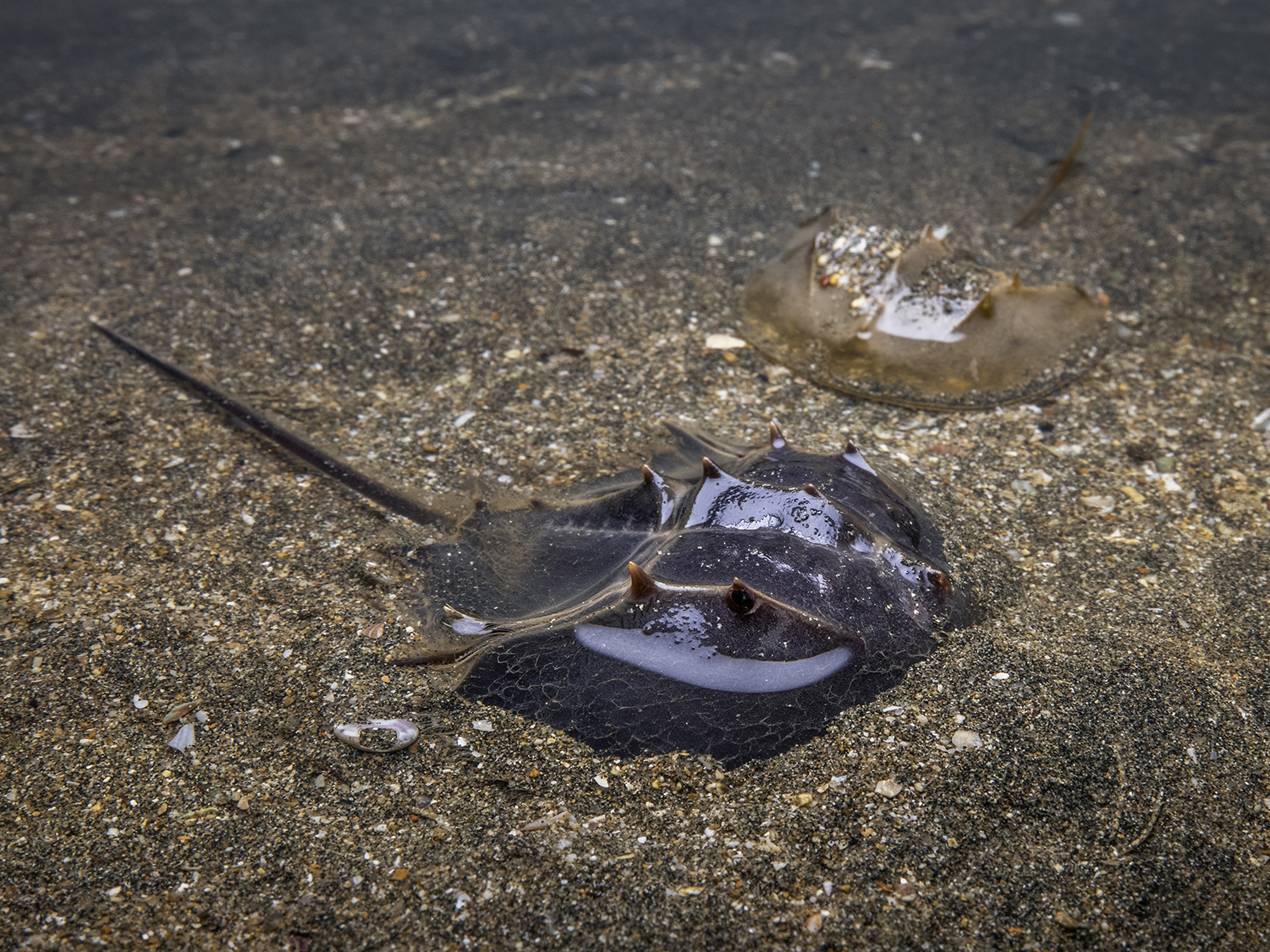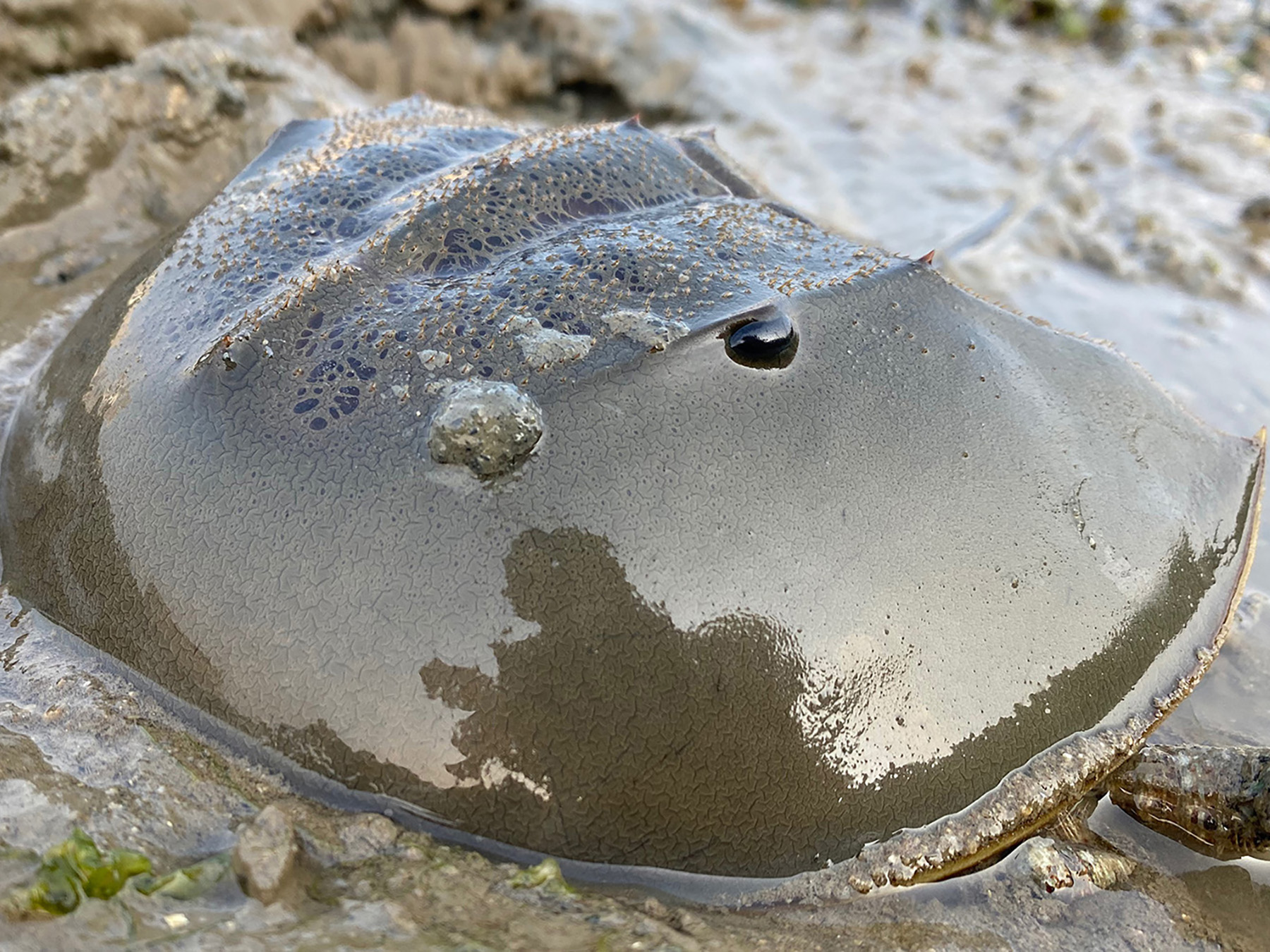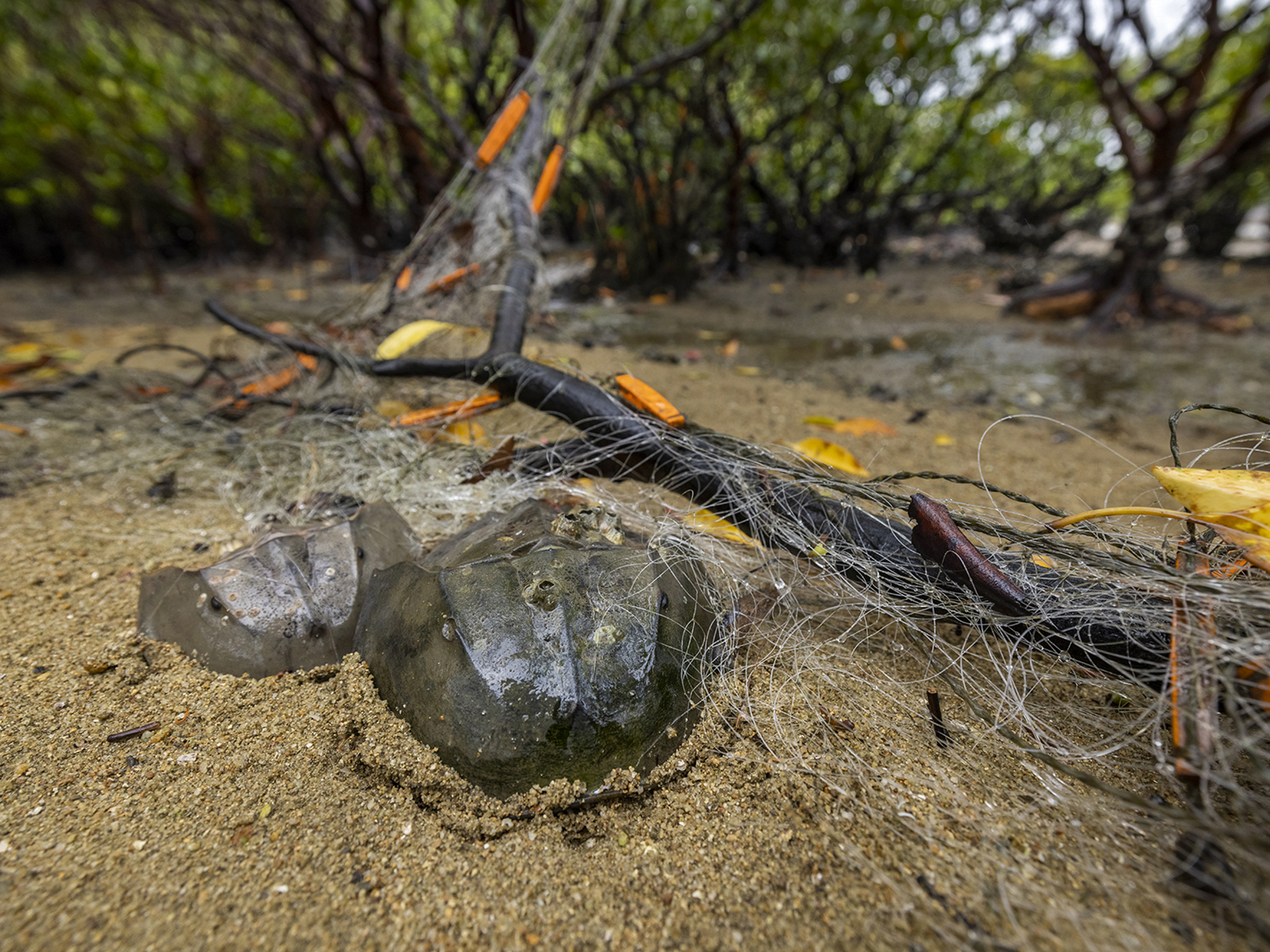Fossils refer to the remains of ancient organisms buried in rock layers. We can learn about the morphology of these ancient life and understand how they differ from the existing organisms through fossils. In Hong Kong, if you want to have a glimpse on fossils, visiting a museum to see their collections is not the only way. There are living fossils right on our mudflats! Our protagonist today is the horseshoe crab, a "living fossil" that roams all around the mudflats.
In Hong Kong, two species of horseshoe crabs can be found, namely the Mangrove Horseshoe Crab (Carcinoscorpius rotundicauda) and the Chinese Horseshoe Crab (Tachypleus tridentatus). Horseshoe crabs are known as "living fossils" as they have existed on Earth for over 400 million years. They retain their primitive characteristics with little change in morphology over the years. They are named after the horseshoe shape of their prosoma. Although they are called "crabs", they are not related to crabs per se but rather to spiders and scorpions. They inhabit mudflats and the ocean and can undergo gaseous exchange from both air and water through their gills. Their carapace serves as an excellent defence against predators, but it also poses a hindrance to their growth. When their carapace becomes too small for them, they undergo a process called "molting" where they shed their old shell to make room for growth. They have a long and slender tail (called telson) that helps them overturn to regain their normal position if they accidentally end up upside down. The cross-sectional shape of their telson is one of the distinguishing features between the two species in Hong Kong. The telson of Mangrove Horseshoe Crab has a circular cross-section, while that of Chinese Horseshoe Crab is triangular.
Charles Darwin, who proposed the theory of "natural selection" once said, "It is not the strongest of the species that survives, nor the most intelligent, but the one most responsive to change." Species constantly evolve in the flow of time, and those that fail to adapt to changes become extinct. Horseshoe crabs can be considered the "big winners" in this game of survival. Ironically, despite withstanding the test of time, populations of horseshoe crabs worldwide including in Hong Kong have significantly declined due to various threats. For instance, excessive coastal development destroys their habitats and nursery ground. Moreover, when they roam on the mudflats, they can accidentally get entangled in discarded or lost fishing gears known as "ghost nets". These marine debris can entrap horseshoe crabs, causing them injuries, impairing their mobility or even leading to death.
It is indeed an uphill battle for the existence of horseshoe crabs where the Chinese Horseshoe Crab was already listed as Endangered on the International Union for Conservation of Nature (IUCN) Red List of Threatened Species. If we do not want horseshoe crabs to face extinction and truly become fossils, we must prioritise environmental conservation. All of us can contribute to conservation of horseshoe crabs. For example, we can say "no" to restaurants which sell horseshoe crabs and refuse to purchase or consume them. While strolling the mudflats, we can be mindful of the tracks they leave on the surface and avoid trampling on them accidentally.



